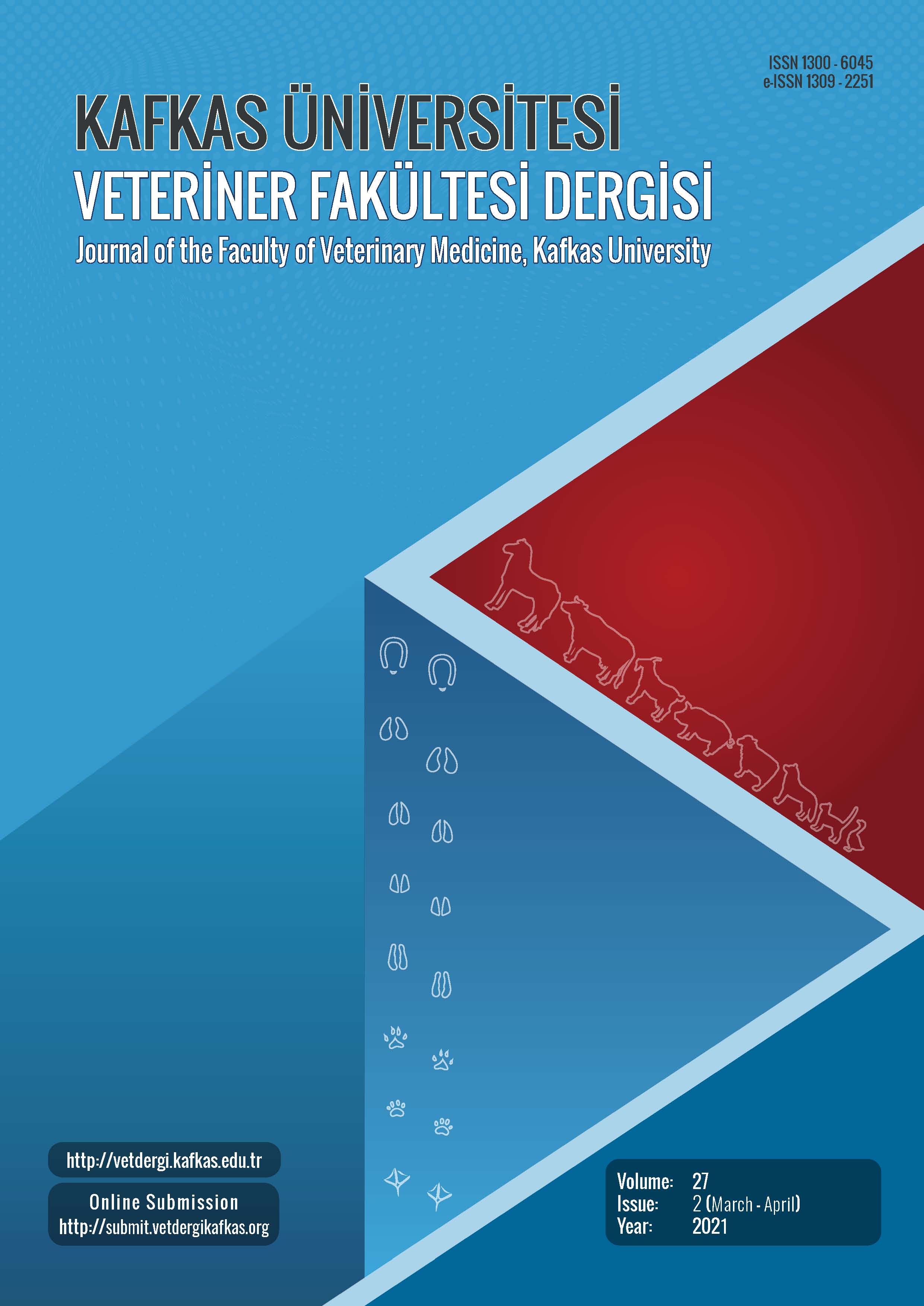Kafkas Üniversitesi Veteriner Fakültesi Dergisi
Erken Çevrim İçi Makaleler
Seroprevalence and Risk Factors Associated with Anaplasma phagocytophilum Infection in Horses in Egypt
1Department of Clinical Sciences, College of Veterinary Medicine, King Faisal University, Al-Ahsa 31982, SAUDI ARABIA 2Department of Surgery, Faculty of Veterinary Medicine, Kafr El Sheikh University, Kafr El Sheikh, EGYPT
3Department of Medical Laboratory Sciences, Faculty of Applied Medical Sciences, King Abdulaziz University, Jeddah, SAUDI ARABIA
4Department of Biomedical Sciences, College of Veterinary Medicine, King Faisal University, Saudi Arabia, P.O. Box 400 Al-Ahsa 31982, SAUDI ARABIA
5Department of Clinical Microbiology and Immunology, Faculty of Medicine, King AbdulAziz University, Jeddah, SAUDI ARABIA
6Special Infectious Agents Unit, King Fahad Medical Research Center, King AbdulAziz University, Jeddah, SAUDI ARABIA
7Department of Medicine and Infectious Diseases, Faculty of Veterinary Medicine, Cairo University, 12613, Cairo, EGYPT
8Department of Animal Medicine (Infectious Diseases), Faculty of Veterinary Medicine, Benha University, Toukh 13736, EGYPT DOI : 10.9775/kvfd.2024.32527 Anaplasma phagocytophilum is a zoonotic obligate intracellular pathogen, that infects horses and is transmitted by Ixodes ticks. The seropositivity for this pathogen does not necessarily associate with clinical signs. Limited data about the epidemiology of A. phagocytophilum in horses in Egypt are available. The purpose of the study was to determine the seroprevalence of A. phagocytophilum in Egyptian horses in three Egyptian governorates and to assess the associated risk factors for infection. A total of 395 serum samples from suspected horses raising in three Egyptian governorates at Northern Egypt were examined using SNAP®4DX® ELISA test. Overall, the seroprevalence of A. phagocytophilum was 11.1% (44/395), with highest rate found in Giza governorate 15.7%. The seroprevalence of A. phagocytophilum increased significantly in older animals, in thoroughbred horses and during summer. The multivariate logistic regression model revealed that age, thoroughbreds, summer season and presence of ectoparasites were identified as risk factors for A. phagocytophilum infection in horses. The results of this study confirmed the presence of antibodies against A. phagocytophilum in Egyptian horses. Thus, regular monitoring and genetic identification of pathogens are critical for implementing an effective control program and reducing public health risks. Anahtar Kelimeler : Anaplasma phagocytophilum is a zoonotic obligate intracellular pathogen, that infects horses and is transmitted by Ixodes ticks. The seropositivity for this pathogen does not necessarily associate with clinical signs. Limited data about the epidemiology of A. phagocytophilum in horses in Egypt are available. The purpose of the study was to determine the seroprevalence of A. phagocytophilum in Egyptian horses in three Egyptian governorates and to assess the associated risk factors for infection. A total of 395 serum samples from suspected horses raising in three Egyptian governorates at Northern Egypt were examined using SNAP®4DX® ELISA test. Overall, the seroprevalence of A. phagocytophilum was 11.1% (44/395), with highest rate found in Giza governorate 15.7%. The seroprevalence of A. phagocytophilum increased significantly in older animals, in thoroughbred horses and during summer. The multivariate logistic regression model revealed that age, thoroughbreds, summer season and presence of ectoparasites were identified as risk factors for A. phagocytophilum infection in horses. The results of this study confirmed the presence of antibodies against A. phagocytophilum in Egyptian horses. Thus, regular monitoring and genetic identification of pathogens are critical for implementing an effective control program and reducing public health risks.











